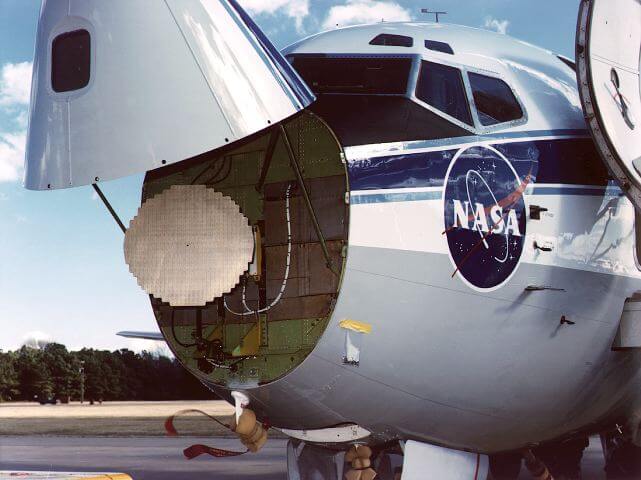- About us
- Product
- Dual-Junction Circulator
-

Dual-junction Microstrip Circulator
-

Dual-junction Drop-in Circulator
-

Dual-junction Coaxial Circulator
- Customized
- Technical Note
- News
- Contact us
Updated on:
Keywords: Ferrite Circulators and Isolators in Radar Systems,ferrite circulators, ferrite isolators, non-reciprocal device, microwave technology
As radar systems push into wider bandwidths and higher frequencies, ferrite circulators and ferrite isolators remain the quiet guardians of signal integrity. Here’s what the 2026 trends mean for non-reciprocal device design in microwave technology.
Ferrite circulator and ferrite isolator devices are foundational to duplexing and receiver protection in radar systems. In 2026, programs demand broader bandwidth, smaller footprints, and higher power density—without sacrificing isolation.
Isolation across temperature, insertion loss at band edges, peak/CW power handling, VSWR tolerance, termination thermal path, and unit‑to‑unit S‑parameter spread.
A non-reciprocal device routes energy differently depending on direction. In duplexed radar front‑ends, a ferrite circulator steers high‑power transmit energy to the antenna and routes echoes to the receiver; a ferrite isolator attenuates reverse power to protect LNAs and amplifiers. These functions preserve dynamic range, reduce desensitisation, and improve detection probability—especially in dense threat or clutter environments.

| Band | Typical range | Common radar uses | Implications for non‑reciprocal devices |
|---|---|---|---|
| L / S | 1–4 GHz | Air traffic, weather, long‑range surveillance | Moderate bandwidth; emphasis on power handling, stability |
| C / X | 4–12 GHz | Marine, airborne, fire‑control, imaging | Higher isolation consistency, compact form factor for pods |
| Ku / Ka | 12–40 GHz | High‑resolution SAR, seeker, automotive | Broadband, low IL, tight tolerances, thermal control |
| mmWave | >40 GHz | Advanced seekers, experimental systems | Miniaturised junctions, self‑bias options, careful packaging |
Ferrite materials under a static magnetic field exhibit gyromagnetic behaviour: RF fields experience Faraday rotation, enabling directional phase relationships in a junction. In a three‑port junction, this yields the familiar sequential flow (Port 1 → 2 → 3 → 1). For isolators, termination of one port in a circulator provides one‑way transmission with reverse absorption.
Rule of thumb: isolation and insertion loss track with ferrite loss tangent, bias field uniformity, and junction symmetry. High‑Q, homogeneous ferrites and stable biasing improve wideband performance.
| Parameter | Design tip | Impact |
|---|---|---|
| Bias uniformity | Use tight magnet tolerances, stable fixtures | Improves isolation flatness |
| Ferrite material | Low loss tangent, adequate Curie temperature | Reduces IL; enhances thermal headroom |
| Conductor finish | High conductivity, smooth plating | Lower conductor loss, better PIM |
| Package thermal path | Direct metal bases, TIMs | Prevents drift and early failures |
Program offices request unified hardware covering multiple sub‑bands. Expect tighter phase balance, improved junction geometries, and ferrite recipes tuned for wide instantaneous bandwidth.
TRM real estate is scarce. Planar and drop‑in non‑reciprocal devices shrink height and footprint while preserving isolation under thermal load.
High peak power and fast edges from GaN PAs stress the isolator termination and the circulator junction. Robust absorbers, thicker bases, and improved thermal vias mitigate risk.
For certain bands, self‑biasing reduces magnet bulk and simplifies assembly. Evaluate stability vs. temperature and field tolerance during qualification.
Multi‑sourcing of ferrite pucks, magnets, and machining, plus common fixture platforms, shortens lead times and reduces unit‑to‑unit variance.
For defence/aerospace radar systems, components are often qualified against well‑known frameworks such as environmental (e.g., vibration, shock, humidity), temperature cycling, altitude, and EMI/EMC requirements. Define pass/fail criteria up front, including IL/Isolation drift limits, termination temperature during worst‑case pulses, and post‑stress S‑parameter re‑verification.
Tip: record “golden unit” S‑parameters and use them to bound acceptance windows for subsequent lots.
| Topic | Questions to ask | Why it matters |
|---|---|---|
| Bandwidth & flatness | What is IL and isolation at the band edges and over temperature? | Prevents surprises in real missions |
| Power | Peak/CW ratings; termination thermal limit; VSWR stress cases? | Avoids failures with GaN front‑ends |
| Variation | Unit‑to‑unit S‑parameter spread; Cpk targets? | Simplifies array calibration |
| Packaging | Height, footprint, mounting; microstrip vs drop‑in vs SMT? | Impacts TRM density |
| Lead time | Ferrite puck and magnet supply; second sources? | Schedule certainty |
| Test data | Provide touchstone files across temp and VSWR? | Accelerates system modelling |
An isolator is a circulator with one port internally terminated—resulting in one‑way transmission and reverse absorption. Circulators provide three‑port sequential routing useful for duplexing.
Active duplexers exist, but passive ferrite parts remain unmatched for simplicity, ruggedness, power handling, and fail‑safe behaviour under high VSWR.
Ferrite properties and magnet bias drift with temperature. Specify isolation and IL across the full range and plan for thermal management of absorptive terminations.
Non‑linearities in materials and contacts contribute to IMD/PIM. Tight assembly and smooth conductors reduce products that pollute the receiver.
When density and automated assembly dominate. Validate thermal and magnetic constraints early; SMT is attractive for L/S and some C/X implementations.
About the Author
HzBeat Editorial Content Team
Marketing Director, Chengdu Hertz Electronic Technology Co., Ltd. (Hzbeat)
Keith has over 18 years in the RF components industry, focusing on the intersection of technology, healthcare applications, and global market trends.